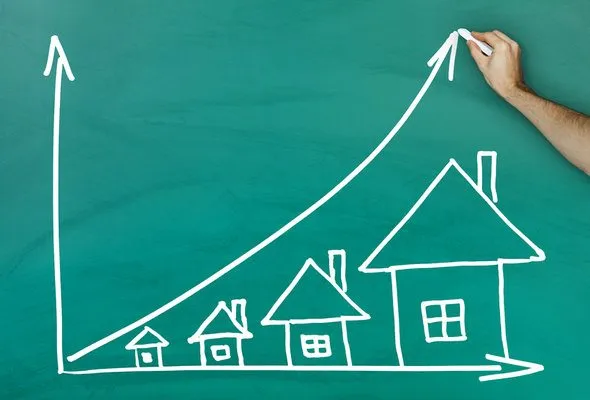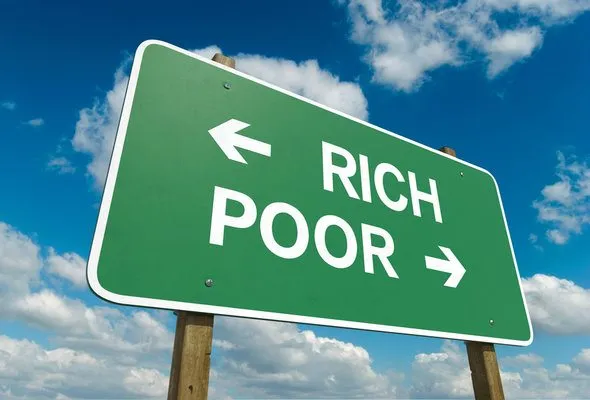You hear a lot about income inequality in the U.S. (particularly in election years), but there’s a wealth gap in this country that some analysts say is even more concerning than the income gap. Let’s take a look at the wealth gap and why it’s an important tool for understanding Americans’ financial lives.
Consider working with a financial advisor as you seek to grow you net worth.
What Is the Wealth Gap?
The term “income gap” refers to the gap in earnings between two groups such as the 1% and the 99%, white and black Americans or, more broadly, the haves and the have-nots. The wealth gap, on the other hand, gets at assets and net worth (assets minus debts), rather than looking at just income.
Take two people, one with a paid-off home worth $200,000 that he inherited, no student debt because his parents paid for college and a salary of $45,000 per year. The other person earns $65,000 per year but rents her home and has student debt of $80,000. Looked at through the lens of income alone, the woman in our example is better off than the man. But when the two situations are looked at through the lens of wealth, it’s clear that the woman’s finances are much more precarious than the man’s and that the man has a higher net worth.
That example helps explain why some analysts and researchers who work on issues of inequality think wealth, as opposed to income, has a lot to tell us about conditions in our country.
So what is the wealth gap? When the non-partisan Congressional Budget Office (CBO) released wealth data in 2022, the results showed total family wealth of $115 trillion in 2019. But that pie wasn’t split evenly. In fact, the top 10% of families held 72% of total wealth, according to CBO data. And families in the top 1% held more than one-third of the total wealth, while the bottom half of the distribution held only 2%.
The CBO also noted that the wealth gap has been growing steadily. Over the past three decades, “the median wealth of families in higher-income groups, families with more education, and older families rose faster than that of families with less income, families with less education, and younger families.”
The Racial Wealth Gap

Though the overall wealth gap in the U.S. is large, the disparities are even bigger when you break the numbers down by race. And it’s not just that unemployment rates are lower for white Americans or that on average white workers are paid more than black workers for the same work.
Data shows vast economic differences across different racial groups in the U.S. According to the Survey of Consumer Finances from the Federal Reserve, the median white household in 2019 had a net worth of $188,200, while median Black households had a net worth of $24,100. This gap was also significant when comparing median Hispanic households ($36,200) with median Asian ones ($461,200) in the same year.
Many factors contribute to the racial wealth gap. One major factor includes historic discrimination that started with slavery. But many analysts also point to post-WWII homeownership policies as a watershed moment because these policies increased the disparity in homeownership rates between white and black families. In the post-war era, policymakers, bankers and real estate professionals created favorable conditions for white homeownership while excluding black families from opportunities for homeownership.
Homeownership is the biggest source of wealth for most Americans, and provides equity that can be tapped to pay for education and retirement or to weather income shocks. So the impact of housing discrimination was to exacerbate the wealth gap between white and black households. Thomas Shapiro, author of “Black Wealth/White Wealth,” says that the homeownership gap is the largest single contributor to the racial wealth gap.
There’s also a gap in retirement savings and liquid assets, as families of color are less likely to have access to affordable financial products for banking and investing. It’s no surprise, then, that expensive payday loan use is more common in communities of color.
The racial gap in income, homeownership rates, investment rates and educational attainment compounds over time, leading to an even wider wealth gap. Adding to that gap is the fact that white families are five times more likely than black families to receive large gifts or inheritances, according to Urban Institute research. Even a small gap can compound over time when all these factors are in play.
In 2016, the Corporation for Enterprise Development and the Institute for Policy Studies said it would take Black Americans 228 years to amass as much wealth as white Americans have today, assuming current growth rates.
The Generational Wealth Gap
Another important wealth gap in the U.S. is the generational wealth gap. Younger Americans’ finances are much more precarious than older Americans’ finances, generally speaking. Of course, you would expect that people would accumulate more wealth and financial stability with age, eventually paying off a mortgage and living off retirement savings.
But the size of the wealth gap between older and younger Americans has some analysts worried. Student debt, low post-Recession salaries and a weak labor market have all hurt the financial health of young people, while older Americans have largely been insulated from these trends.
CBO research found that “family wealth was generally greater for older Americans.” In 2019, the median wealth for families age 65 and older ($380,500) was “22.2 times the median wealth of families younger than 35, 2.6 times that of families ages 35 to 49, and 1.3 times that of families ages 50 to 64.”
Taken together, these data points indicate that the current generational wealth gap goes beyond the normal, expected gap between those who are starting out in their careers and those who are seniors.
Will today’s young people ever reach the level of wealth that today’s seniors enjoy, let alone surpass that prosperity? Analysts aren’t sure. Today’s young people are worse-off financially than young people in previous generations were and those disadvantages may only compound.
The Gender Wealth Gap
There’s a lot of talk about the income gap between men and women, and the fact that women in 2020 earned 82 cents for every dollar that men earned, according to the U.S. Census. This means that women earned on average 18% less than men.
It is worth noting that the gender pay gap can vary, depending on occupation, geography, race, ethnicity, and other factors. And this income inequality also contributes to a wider wealth gap between men and women.
Women earn less, are less likely to save for retirement and are less likely to invest in the stock market. When they do save, they save less. That leaves them with fewer assets in retirement and makes them more likely to rely on Social Security as their primary – or sole – source of retirement income, and to live in poverty.
Surveys show that even women who do save for retirement wind up with less than half of what men accumulate by the time they leave the workforce.
Bottom Line

Building assets is an important component of financial health. When assets accumulate over time in some populations while others go without, the nation’s wealth gap grows. That’s the situation the U.S. finds itself in now. Time will tell whether policymakers take up the challenge of shrinking the wealth gap.
Tips on Growing Your Wealth
- A financial advisor can help you build a nest egg for retirement or so you can leave a legacy for you loved ones. Finding a financial advisor doesn’t have to be hard. SmartAsset’s free tool matches you with up to three vetted financial advisors who serve your area, and you can interview your advisor matches at no cost to decide which one is right for you. If you’re ready to find an advisor who can help you achieve your financial goals, get started now.
- Determine how your money will grow over time with this free investment calculator from SmartAsset.
Photo credit: ©iStock.com/abluecup, ©iStock.com/bowie15, ©iStock.com/AndreyPopov
